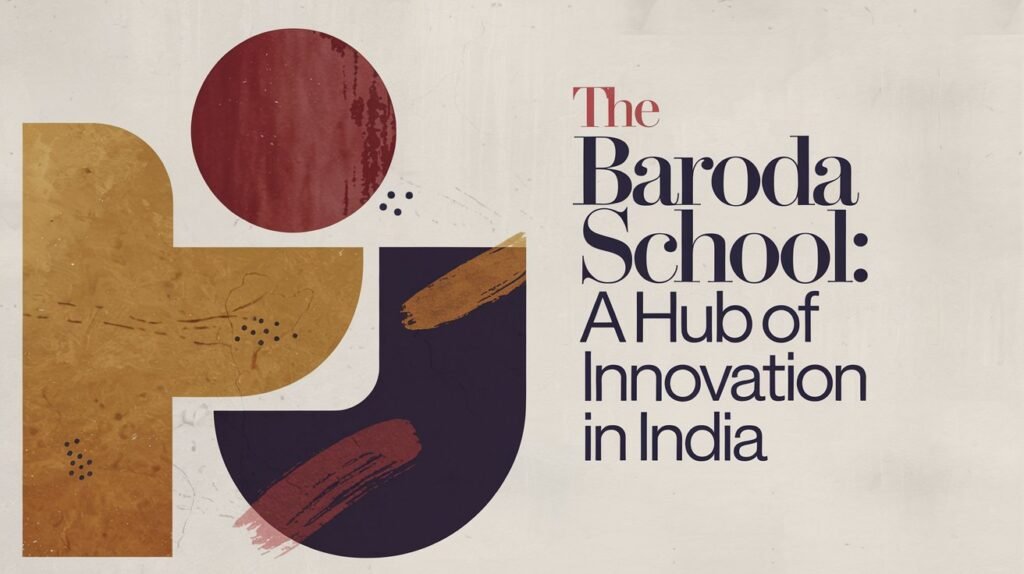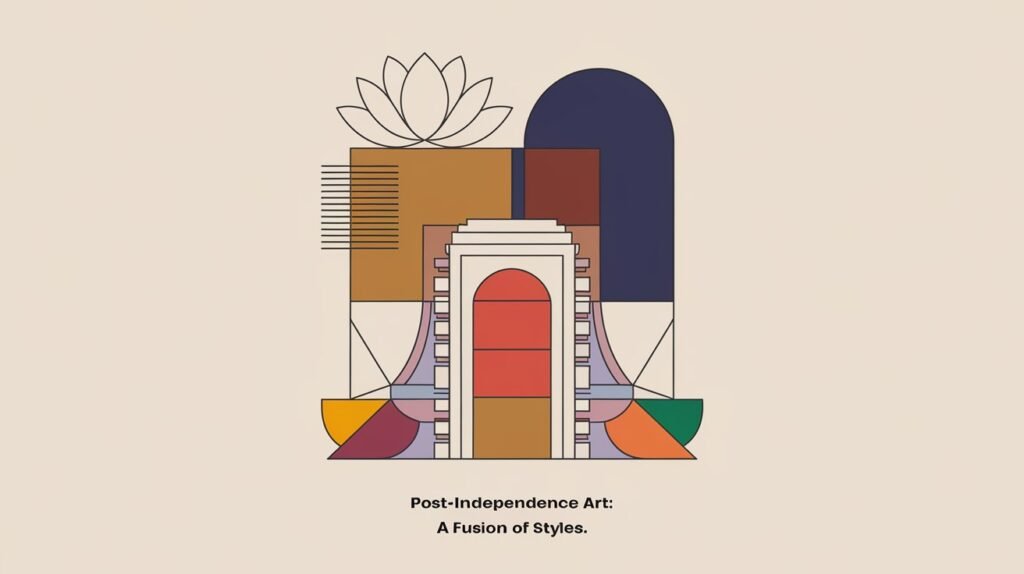Composed By-Ketan Goriwale
Art Movement in India-
Introduction:
Art in India is much more than just a form of expression; it’s a dynamic conversation between tradition, culture, and innovation. From the intricate murals of ancient temples to the bold brushstrokes of modern-day artists, Indian art has evolved continuously, reflecting the changing socio-political landscape. But what exactly fueled this evolution? How did movements like the Bengal School of Art, the Progressive Artists’ Group, and others shape the artistic identity of India? In this blog post, we’ll explore the various significant art movements that have defined Indian art history—from the classical and folk traditions to the avant-garde. We’ll delve into the Bengal School of Art, which emphasized indigenous Indian aesthetics during the British colonial period, the Progressive Artists’ Group, which brought modernism to India, and the New Media Art Movement, which embraces contemporary digital mediums. Additionally, we’ll explore the impact of movements like the Baroda School and the Post-Independence art era, which have played a vital role in defining the art landscape of today. Whether you’re a seasoned art enthusiast or someone new to the world of Indian art, this journey through the movements that have shaped Indian art will give you a fresh perspective on the country’s rich cultural heritage.
Key Art Movements in India: A Journey Through Time
India’s art landscape has undergone dramatic transformations, influenced by a series of artistic movements that reflect the country’s history, struggles, and aspirations. From the classical to the modern, these movements have provided a platform for artists to push boundaries, challenge conventions, and craft unique narratives. But what makes each movement so significant? How have these art movements shaped not just India, but the global art scene as well?
Let’s examine some of the key art movements in India that have had a lasting impact.

1. Bengal School of Art: Rediscovering Indian Heritage
The Bengal School of Art, which emerged in the early 20th century, was a response to the British colonial influence and the dominance of European art styles. Under the leadership of artists like Abanindranath Tagore, this movement sought to revive and celebrate indigenous Indian art forms, blending traditional styles with modern sensibilities.
- Key Characteristics:
- Focus on Indian mythology and history
- Use of soft, muted colors
- Incorporation of Mughal and Rajput painting techniques
- Impact: This movement played a pivotal role in the Indian nationalist movement, as it encouraged artists to reclaim their cultural identity during a time of political unrest.

2. Progressive Artists’ Group: A Modernist Revolution
The Progressive Artists’ Group (PAG), formed in 1947, marked a dramatic shift towards modernism in Indian art. The movement, led by artists such as F.N. Souza, M.F. Husain, and S.H. Raza, rejected traditional styles in favor of bold experimentation with form, color, and technique.
- Key Characteristics:
- Abstract and figurative art
- Focus on modern themes, including urbanization and social issues
- Incorporation of Western techniques while maintaining an Indian perspective
- Impact: The PAG became a symbol of the new post-independence India, breaking free from colonial art traditions and pushing the boundaries of artistic expression.

3. The Baroda School: A Hub of Innovation
In the 1950s, the Baroda School emerged as an intellectual and artistic powerhouse. Based in Vadodara (formerly Baroda), this movement fostered experimentation, blending traditional techniques with contemporary concepts. Artists from this school, like K.G. Subramanyan and Bhupen Khakhar, were known for their diverse approaches, combining folk traditions with new-age ideas.
- Key Characteristics:
- Diverse techniques ranging from realism to abstraction
- Exploration of local and national themes with a modern twist
- Emphasis on narrative and symbolism
- Impact: The Baroda School’s contributions helped reshape Indian art in the 20th century, offering fresh perspectives and pushing the limits of visual storytelling.

4. New Media Art Movement: The Digital Revolution
Fast forward to the 21st century, and the art world in India has embraced the digital age. The New Media Art Movement in India is defined by the use of digital tools and technology, such as video installations, digital photography, and interactive art. Artists like Raghava KK and Shilpa Gupta are known for their innovative use of technology to explore complex themes like identity, politics, and social issues.
- Key Characteristics:
- Use of digital technology and multimedia
- Exploration of identity, politics, and societal issues through interactive mediums
- Blurring of the lines between art, technology, and the audience
- Impact: This movement reflects India’s embrace of globalization and technological advances, giving rise to an entirely new form of artistic expression that transcends physical boundaries.

5. Post-Independence Art: A Fusion of Styles
After India gained independence in 1947, the art scene began to reflect the aspirations of a newly sovereign nation. This era saw the fusion of traditional Indian styles with Western modernism, resulting in a diverse range of expressions that spanned from realism to abstraction.
- Key Characteristics:
- Emergence of new techniques, such as oil painting and mixed media
- Fusion of Indian folk art with Western influences
- Exploration of Indian myths and culture through a modern lens
- Impact: This period witnessed the birth of some of India’s most celebrated artists, including M.F. Husain and Tyeb Mehta, whose works continue to inspire generations.
Each of these movements tells a story of resilience, creativity, and the desire to express individual and collective identity. Whether through the revival of traditional forms or the adoption of new technologies, Indian art continues to evolve, shaped by the changing times. As we move forward, it’s clear that the art movements in India will continue to influence not only the country’s artistic direction but the global art conversation.
The Enduring Legacy of Art Movements in India
As we wrap up our journey through the rich tapestry of India’s art movements, it’s clear that the story of Indian art is far from one-dimensional. From the revival of traditional techniques to the bold embrace of modernism and digital innovation, each movement tells a story of cultural resilience, social change, and boundless creativity. But what makes these movements so powerful? How have they shaped the way we view art, both in India and globally?
It’s not just about the techniques or the styles—it’s about the ideas they represent and the emotions they evoke. Whether it’s the nationalist spirit behind the Bengal School or the experimental boldness of the Progressive Artists’ Group, Indian art movements have always pushed the envelope. They have not only mirrored the political and social changes in India but have also played a vital role in influencing global art trends.
Today, Indian art continues to evolve, embracing new mediums and addressing contemporary issues. The New Media Art movement, for instance, highlights how technology can serve as a powerful tool for artists to express complex themes like identity and society in a rapidly changing world. This evolution is not just a testament to the creativity of Indian artists, but also to the cultural dynamism that is at the heart of the country.
So, how does India’s art future look? Will the fusion of traditional and modern styles continue to thrive? And what new forms of expression will emerge as technology and globalization redefine the boundaries of art?
These are the questions that will guide the next generation of artists, curators, and collectors. But one thing is certain: India’s art movements have laid a foundation that is both rich and diverse, providing endless inspiration for artists and art lovers alike. The conversation surrounding Indian art will only continue to grow, and we’re lucky to witness this exciting transformation unfold.
As you reflect on these movements, take a moment to appreciate the profound impact Indian art has had—on a national, cultural, and global scale. The vibrant, evolving landscape of Indian art beckons us to keep exploring, questioning, and, most importantly, creating.




